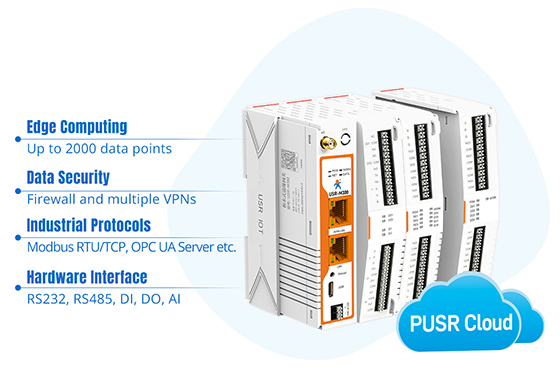Introduction
In today’s rapidly evolving industrial landscape, seamless communication between machines, sensors, and systems is more important than ever. However, many industrial operations still rely on legacy equipment that uses serial communication protocols such as RS-232, RS-422, or RS-485. This is where serial device server and industrial gateways come into play. These devices act as bridges, allowing traditional serial devices to communicate effectively within modern Ethernet and wireless networks.
Understanding Serial Device Servers
What is a Serial Device Server?
A serial device server is a networking device that converts serial data signals into network packets, enabling serial devices to connect to Ethernet-based networks. It allows older machines and instruments to transmit and receive data over LAN, WAN, or even the internet, thus extending their lifespan and improving operational efficiency.
How It Works
At its core, the serial device server works as a protocol converter. It takes serial data from connected devices (such as PLCs, sensors, barcode scanners, or industrial controllers), encapsulates it into TCP/IP packets, and sends it across the network. This allows remote monitoring, data logging, and real-time control through a central system or software application.
Industrial Gateways – The Next Step in Connectivity
What is an Industrial Gateway?
An industrial gateway goes beyond simple data conversion. It acts as a central communication hub, connecting different industrial networks and translating various communication protocols such as Modbus, PROFIBUS, EtherNet/IP, and MQTT. Essentially, it enables interoperability between disparate systems that would otherwise be unable to communicate.
The Role of Industrial Gateways
Industrial gateways play a crucial role in Industry 4.0 and the Industrial Internet of Things (IIoT) by enabling seamless data exchange between devices, cloud platforms, and enterprise systems. They integrate legacy systems with modern infrastructure, making them vital for digital transformation in manufacturing and automation.
Key Differences Between Serial Device Servers and Industrial Gateways
Although both devices facilitate communication, they serve slightly different purposes:
- Serial Device Servers are mainly used to connect serial devices to Ethernet networks.
- Industrial Gateways connect multiple protocols and networks, often performing data filtering, translation, and analysis.
In short, a serial device server is perfect for simple serial-to-Ethernet conversion, while an industrial gateway is used for multi-protocol communication and system integration.
Benefits of Using Serial Device Servers
1. Extending the Life of Legacy Equipment
Industrial machinery can last decades, but many older systems use outdated serial ports. A serial device server allows businesses to keep using their existing equipment while integrating it into newer network environments.
2. Remote Accessibility
By converting serial connections into network-compatible data, operators can access devices remotely. This enables remote diagnostics, firmware updates, and real-time control — reducing the need for on-site visits.
3. Simplified Data Management
Serial device servers facilitate centralised monitoring and data collection, making it easier to track machine performance, detect faults, and optimise operations.
Benefits of Industrial Gateways
1. Seamless Integration of Diverse Systems
Industrial gateway enable communication between machines using different protocols. This ensures that every component in a production line can communicate effectively, regardless of its manufacturer or communication type.
2. Cloud and IIoT Connectivity
Gateways act as a bridge to the cloud, transmitting data from machines and sensors to cloud platforms for analytics, monitoring, and automation. This is a crucial step in implementing smart factories and predictive maintenance strategies.
3. Enhanced Security and Control
Modern gateways come equipped with built-in cybersecurity features, such as firewalls, encryption, and VPN support, ensuring data integrity across industrial networks.
Applications in Various Industries
1. Manufacturing
In manufacturing plants, serial device servers and gateways connect Programmable Logic Controllers (PLCs), robotic systems, and Human-Machine Interfaces (HMIs), improving operational efficiency and reducing downtime.
2. Energy and Utilities
Power plants and renewable energy farms use these devices to gather real-time data from meters, sensors, and substations. Gateways ensure efficient data transfer between field devices and control centres.
3. Transportation and Logistics
From automated warehouses to fleet monitoring, these communication devices support real-time tracking, temperature monitoring, and asset management through reliable data exchange.
4. Oil and Gas
In remote and hazardous locations, industrial gateways connect field equipment to control systems securely, facilitating safe monitoring of pressure, temperature, and flow data.
5. Smart Cities
Serial device servers and gateways also play a role in smart city projects, enabling communication between public utilities, lighting systems, and IoT-based infrastructure.
Choosing the Right Device for Your Needs
When selecting a serial device server or industrial gateway, consider factors such as:
- Number of serial ports required
- Supported protocols (e.g., Modbus, MQTT, BACnet)
- Environmental conditions (temperature, humidity, vibration)
- Security features (firewall, encryption, user authentication)
- Scalability for future expansion
For simpler serial-to-network tasks, a serial device server may suffice. However, if your operation requires integration across multiple systems and protocols, an industrial gateway is the better choice.
The Future of Industrial Communication
The future of industrial connectivity lies in intelligent gateways that combine edge computing, data analytics, and AI capabilities. These devices not only facilitate communication but also process and analyse data locally before sending it to the cloud. This reduces latency and bandwidth usage, paving the way for faster, smarter, and more autonomous industrial systems.
Challenges and Considerations
While serial device servers and gateways bring numerous advantages, they also come with challenges. Ensuring network security, data accuracy, and protocol compatibility are ongoing concerns. Companies must also invest in proper training and maintenance to maximise device performance.
Conclusion
In an era driven by data and automation, serial device servers and industrial gateways serve as the unsung heroes of industrial communication. They bridge the gap between legacy systems and modern networks, enabling efficient, secure, and intelligent operations. Whether you’re upgrading a traditional plant or building a smart factory from scratch, these devices are essential tools for unlocking connectivity and driving progress in the industrial world.



